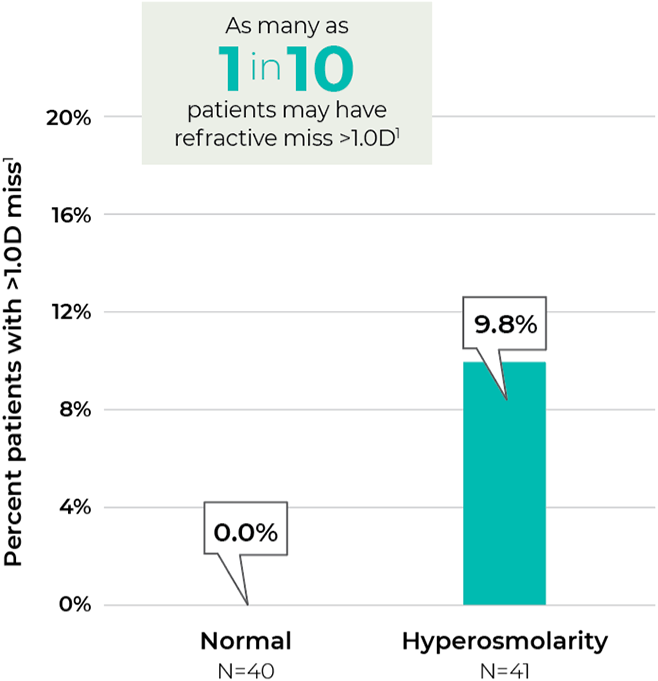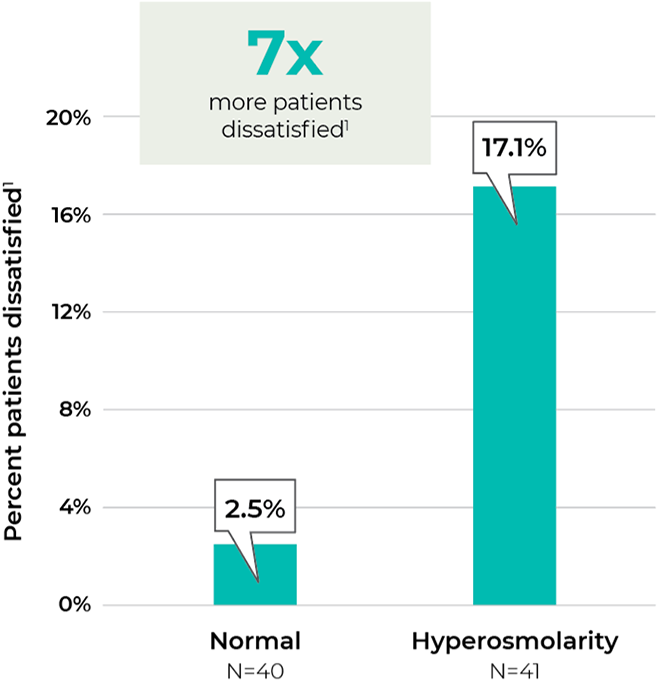Tear Osmolarity and Corneal Health
Did you know that tear hyperosmolarity may result in 7x more patients being dissatisfied with their cataract surgery outcomes?1

Up to 80% of cataract surgical patients may be at risk for ocular surface disease, but they don’t always present with symptoms.2

1 in 6 cataract patients with hyperosmolarity risk a >1.0 D variation in keratometry measurements. This variability increases the chances of post-operative refractive surprises.3
The ASCRS recommends pre-operative tear osmolarity testing to identify visually significant ocular surface disease.4
Intraocular light scatter impacts quality of vision5
Hyperosmolarity has been shown to create light scatter equivalent to a grade 2–3 cataract.5,6
Tear hyperosmolarity makes refractive misses and patient dissatisfaction more likely after cataract surgery.1


References
- Kursite A, Laganovska G. J Ophthalmol (Ukraine). 2023;2(511):11-15.
- Gupta PK, et al. J Cataract Refract Surg. 2018;44(9):1090-1096.
- Epitropoulos AT, et al. J Cataract Refract Surg. 2015;41(8):1672-1677.
- Starr CE, et al. J Cataract Refract Surg. 2019;45(5):669-684.
- Artal P. et al. PLos One. 2011;6(2):e16823.
- Sullivan BD, et al.
Clin Ophthalmol. 2024;Aug 28;18:2419-2426.



